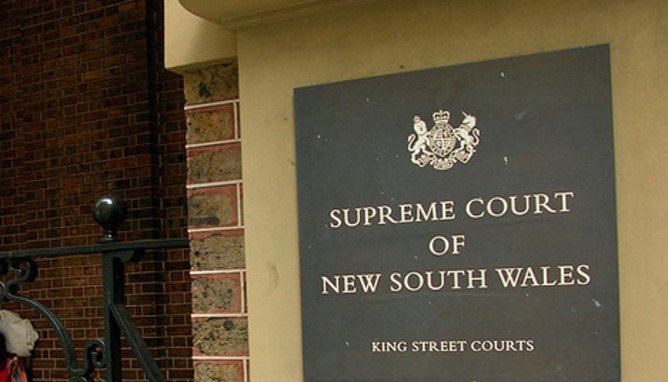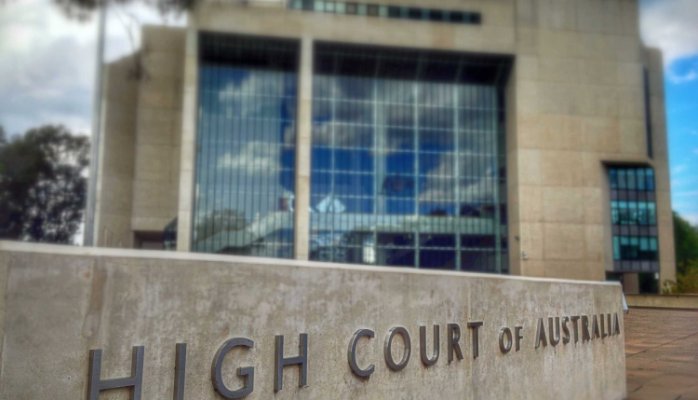
Court accepts market-based causation: In the matter of HIH Insurance Limited (In liquidation) [2016] NSWSC 482 (20 April 2016)
On 20 April 2016, Brereton J of the Supreme Court of New South Wales delivered judgment in four sets of proceedings brought by plaintiffs who were shareholders in HIH and who acquired HIH shares in the period between 26 October 1998 and 15 March 2001. The proceedings each had their genesis as appeals pursuant to s 1321 of the Corporations Act 2001 from the rejection of proofs of debt and in which orders were sought that the decisions of the liquidators not to admit, or to fail to adjudicate upon, the proofs be reversed or modified, and that the claims be admitted.
Background and Issues
The plaintiffs contended, and the defendants admitted, that the FY 1999 results, the FY2000 interim results and the FY2000 final results contained and conveyed representations which were misleading and deceptive, or likely to mislead or deceive and that by publishing and releasing them, HIH contravened s 52 of the Trade Practices Act 1974 and sections 995 and/or 999 of Corporations Law. Those results overstated the consolidated operating profits by approximately $108,350,000 and consolidated net assets by $192,000,000 subject to consequential adjustments for the effects of taxation and interest income that would have been earned by HIH and its relevant controlled entities from certain deposit arrangements with Hannover Re.
The principal issues were:
- Whether HIH (and related corporations) were liable to the plaintiffs for loss and damage caused by the admitted contraventions;
- Whether the plaintiffs were entitled to claim damages on the basis of “indirect causation”, without proving direct reliance on the contravening conduct; and
- The basis for quantification of the plaintiffs’ damages.
The contentions on causation
The plaintiffs contended that they acquired HIH shares on the ASX at the then prevailing market price, and that the market price was artificially inflated by reason of the overstated reported financial results which conveyed to the market an over-optimistic impression of HIH’s financial position and prospects. Thus, it was argued that the contravening conduct resulted in the prices at which HIH shares traded on the ASX being higher than those which would otherwise have obtained, and that a person who acquired shares in that inflated market suffered loss because he or she paid more than would otherwise have been paid for the subject shares. This has been described as “indirect causation” or “market based” causation.
The defendants argued that, on the authority of the decisions of the Court of Appeal in Digi-Tech (Australia) Ltd v Brand [2004] NSWCA 58; (2004) 62 IPR 184 and Ingot Capital Investments Pty Ltd v Macquarie Equity Capital Markets Ltd [2008] NSWCA 206; (2008) 73 NSWLR 653 and of the Full Court of the Federal Court in Ford Motor Company of Australia Limited v Arrowcrest Group Pty Ltd [2003] FCAFC 313; (2003) 134 FCR 522, where a person claims to have suffered loss by reason of entry into a transaction, they must establish reliance and that “indirect causation” is available only in cases where the applicant is passive and a third party has been induced by the misleading or deceptive conduct to act to the applicant’s prejudice; whereas in this case, the plaintiffs were seeking to mount an indirect causation case where the third party is “the market” rather than an identifiable individual, and where they have not been passive but have themselves actively entered into the transactions by which they claim to have suffered loss.
In such circumstances, the defendants submitted, that it was necessary for the plaintiffs to establish that they relied on (or would have acted differently but for) the contravening conduct, and that absent such reliance there was no “causative bridge” between the contravening conduct and the loss. In this case, that would mean that in order to demonstrate a relevant causal connection between the contravening conduct and the alleged loss, each plaintiff would have to establish that he, she or it was induced by the contravening conduct to enter into the transactions whereby he, she or it acquired HIH shares, in the sense that he, she or it relied upon the overstated financial results when making a decision to acquire those shares, or would have acted differently but for those overstated results.
Resolution
Whilst Brereton J noted that there was no case that had directly decided the issue of the availability of indirect causation nevertheless there had been obiter comments in a number of judgments that provided support for it.
His Honour noted in this regard the comments made by: Bergin CJ in Eq in McBride v Christie’s Australia Pty Ltd [2014] NSWSC 1729 in which her Honour relied on Hodgson JA in Ingot and the Full Court in ABN Amro each of which had focused on misleading representations that were not made directly to the person who ultimately suffered loss; Perram J in Grant-Taylor v Babcock and Brown Ltd (in liq) [2015] FCA 149 at [219]-[220]; (2015) 322 ALR 723; (2015) 104 ACSR 195, in which his Honour accepted that a party who acquires shares on a stock exchange could recover compensation for price inflation arising from a failure to disclose material required to be disclosed, so long as they were not themselves aware of the non-disclosed material and Caason Investments Pty Ltd v Cao [2015] FCAFC 94, although an interlocutory appeal, where Gilmour and Foster JJ concluded that none of the authorities relied upon by the respondents (which included Ingot) supported a submission that the applicants’ market causation case was not arguable.
Edelman J in Caason also concluded that the legal argument of market-based causation had reasonable prospects of success and should be allowed to proceed to trial, although whether market-based causation is established as a matter of fact is a different question which would require expert evidence. His Honour explained market-based causation as follows:
[93] …The point concerning causation, about which the appellants incorrectly assumed the primary judge had erred, relates to what was described as “market based causation“. A market based causation case is not a special sub-category of causation. It is, simply put, an example of indirect causation. One circumstance of market based causation, albeit inadequately pleaded before the primary judge, involves an alleged disclosure of misleading information to the market in a disclosure statement. That misleading information causes the listed price of securities being inflated which, in turn, causes an alleged loss because the investor purchases the securities at a higher price than he or she would otherwise have paid. The primary judge’s reasons, properly understood, did not exclude the possibility of a claim based on market based causation.
The Court found that the measure of the plaintiffs’ damages is closely related to their causation case. On the plaintiffs’ theory of causation, it is not a simple “no transaction” case – that is to say, it is not a case in which the contravening conduct caused the plaintiffs to acquire (or retain) shares which they would otherwise not have acquired; rather, it caused them to pay, for shares which they would have acquired in any event, a price which was inflated above that which would otherwise have obtained.
On this approach, the measure of the plaintiffs’ damages is not the difference between the price paid and the “true value” of their shares, but the difference between the price they paid and the price they would have paid had the contravening conduct not occurred but all other factors remained constant. This requires a determination of the quantum of the impact, if any, of the contravening conduct, on the price at which HIH shares traded.
Measure of damages
The Court found that the measure of the plaintiffs’ damages is closely related to their causation case. On the plaintiffs’ theory of causation, it is not a simple “no transaction” case – that is to say, it is not a case in which the contravening conduct caused the plaintiffs to acquire (or retain) shares which they would otherwise not have acquired; rather, it caused them to pay, for shares which they would have acquired in any event, a price which was inflated above that which would otherwise have obtained.
On this approach, the measure of the plaintiffs’ damages is not the difference between the price paid and the “true value” of their shares, but the difference between the price they paid and the price they would have paid had the contravening conduct not occurred but all other factors remained constant. This requires a determination of the quantum of the impact, if any, of the contravening conduct, on the price at which HIH shares traded.
Conclusion
The Court found that the relevant contravening conduct resulted in attributing to an HIH share during the relevant periods the hypothetical prices $1.50 as at 30 June 1999, $1.67 at 31 December 1999 and $0.93 at 30 June 2000, which represents respectively 83%, 119% and 93% of actual market price at those dates but that the better approach to evaluating the impact of the contravening conduct on the share price was to identify the difference between the price at which HIH shares actually traded on the market, and the hypothetical price achieved by applying the price to book value at which they actually traded to an adjusted book (adjusting only for the Hannover Re arrangements).
On that basis, the shares would have traded at 93.75% of actual price after the FY1999 results were released, 90.54% after the FY2000 interim results were released, and 86.90% after the FY2000 final results were released. His Honour concluded that this also demonstrated that the contravening conduct did inflate the price for HIH shares, so that indirect causation was in fact is established.
Accordingly, subject to issues affecting particular cases which were reserved for further argument, the plaintiffs who acquired their shares during the period 25 August 1999 to 2 March 2000 were held to be entitled to damages equivalent to 6.25% of the price they paid; those who acquired their shares during the period 3 March 2000 to 17 October 2000 to 9.5% of the price paid, and those who acquired their shares after 17 October 2000 to 13% of the price paid.
This decision will provide some obvious and considerable comfort to shareholders and to the promoters of shareholder class actions. The question will not be finally resolved until it has been considered by the High Court.
Dated: 28 April 2016
Anthony Lo Surdo SC
 12 Wentworth Selborne Chambers
12 Wentworth Selborne Chambers
www.12thfloor.com.au/barristers/senior-counsel/anthony-lo-surdo-sc.html

